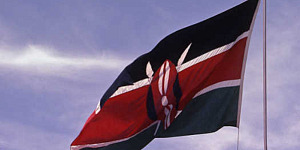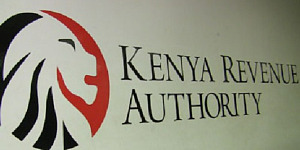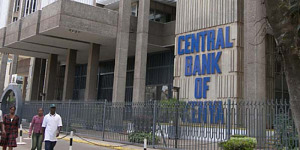Fitch Ratings has downgraded Kenya's Long-Term Foreign-Currency Issuer Default Rating (IDR) to 'B-' from 'B'. The Outlook is Stable.
Key Rating Drivers
The downgrade of Kenya's IDRs reflects the following key rating drivers and their relative weights:
High
Rating Downgraded, Stable Outlook: The downgrade reflects heightened risks to Kenya's public finances after the government backtracked on revenue measures in the Finance Bill 2024 in response to violent social protests, the increased risk to political stability, and rising domestic debt costs, even as the authorities embark on expenditure cuts. Fitch also see a moderately greater risk to external financing, partly reflecting elevated external commercial borrowing costs in the context of foreign-exchange reserves that are below the 'B' median.
The Stable Outlook reflects Fitch's expectation that continued strong official creditor support will help alleviate near-term external liquidity pressures, although the sovereign's funding needs will remain large and are expected to rise. The tightening of monetary policy will help to keep inflation anchored, providing support for the currency. Additionally, the authorities plan to continue with their fiscal consolidation agenda, although the path to achieving fiscal targets has become increasingly challenging, in our view.
Heightened Socio-Political Risk: Violent social protests related to tax hikes in the Finance Bill 2024 and calls for governance reforms have increased socio-political risk. President William Ruto has responded by withdrawing the bill, and initiating efforts to form a broad-based government to replace the previous cabinet that was dismissed in July 2024. However, we consider the risk of prolonged social unrest remains, significantly complicating the environment for fiscal consolidation and presenting downside risks to economic activity.
Wider Fiscal Deficit: Fitch anticipates a widening of the fiscal deficit to 4.7% of GDP in the financial year ending June 2025 (FY25), 0.5pp higher than the government's new deficit plan (which was revised up by 0.9pp in the July draft supplementary budget). This reflects the withdrawal of planned revenue measures, and higher debt servicing and social spending costs, amid civil pressures, notwithstanding efforts to cut spending. We expect revenue to continue to underperform its target in FY26, at 17.4% of GDP (below our projected 'B' median of 18.1%), with only a modest narrowing of the deficit, to 4.3% of GDP.
Fiscal Slippage Continues: Current fiscal pressures follow slippage in FY24, when based on preliminary results, the budget deficit was 5.6% of GDP, 1.2pp higher than budgeted due to higher spending and shortfalls in tax revenue. In FY24, ordinary tax revenue collections fell short of the revised and original targets by 1.1% and 1.8% of forecast FY24 GDP, respectively.
Rising Interest Payments: Revenue shortfalls have led to greater recourse to more expensive borrowing from external commercial creditors and the domestic market. Average yields on short-term government securities have risen, reflecting higher central bank policy rates and domestic liquidity constraints. We project government interest payments/revenue to reach 31.7% in 2025 (from 31.5% in 2024) and 32.8% in 2026, well above the 2026 median forecast for 'B' category peers of 12%.
High Debt: Government debt/GDP rose to nearly 72% in FY23, from 67% in FY22, partly due to currency depreciation. We estimate that the debt/GDP ratio declined to 66.4% in FY24, mainly linked to a stronger shilling in 2HFY24 (as nearly half of Kenya's government debt is foreign-currency denominated). We expect the ratio to decline marginally to 65.6% by FYE26, due partly to strong nominal GDP growth, but remain above the projected 2025 'B' median of 51.5%.
Medium
External Financing Challenges: The government's external debt service will moderate in FY25 to USD4.4 billion (3.2% of GDP), from USD5.4 billion (4.6% of GDP) in FY24, but will exceed USD5 billion in FY26 through FY28, due to continuing large financing needs. The government aims to secure about USD5 billion (3.7% of GDP) in foreign financing in FY25, including USD2 billion from official creditors and USD1.7 billion in project loans. It also aims to raise USD1.3 billion from commercial creditors, but we view this target as ambitious, and anticipate it will fall short by USD0.5 billion.
The adjustment to the FY25 budget greatly complicates hitting targets agreed in the IMF programme, but we anticipate these will be renegotiated. The expiration of the IMF arrangement in April 2025 is a source of uncertainty over subsequent financing flows. We expect the current account deficit/GDP to widen to 4.2% in 2024, from 3.9% in 2023, due to a recovery in imports and high external debt obligations. We project gross reserves will decline to USD7.0 billion by end-2024, providing coverage of 3.2 months of current external payments (CXP; or 4.6 months of imports), below our 'B' median of 4.2 months of CXP.
Public Finance Management Shortfalls: Pending bills have accumulated in recent years, highlighting shortfalls in public financial management. Outstanding public sector arrears were KES487 billion (3.1% of GDP) at end-March 2024, with the majority attributed to state corporations. The government has established a pending bills committee mandated to verify and clear existing arrears, but we expect pending bills to remain high in the near term, due to revenue constraints and limited controls to reduce leakages.
Kenya's 'B-' IDRs also reflect the following key rating drivers:
Credit Rating Fundamentals: Kenya's rating is supported by continued reforms anchored by the current IMF programme, and strong broad-based medium-term growth prospects. Fitch forecasts GDP growth to average 5.4% over 2025-2026, above the 2026 'B' median of 4.5%. The rating is constrained by weak governance, rising interest payments, a narrow revenue base and high external indebtedness.
Tight Monetary Policy: The Central Bank of Kenya (CBK) has raised the policy rate twice by a total of 250bp to 13% since November 2023 to curb inflation and support the currency. Although near-term external funding constraints have moderated, and real rates remain in positive territory, we expect the CBK to be cautious on rate cuts, which should support the currency, and a fall in average inflation to 4.7% in 2025 from 5.4% in 2024.
Well-Capitalised Banking Sector, Challenges Remain: The banking sector remains well-capitalised and profitable. Asset quality has deteriorated, with non-performing loans rising to 16.1% of total loans in April 2024 from 15.5% in February 2024, but loss-absorption capacity remains adequate. Banks' exposure to the sovereign, mainly through substantial holdings of government debt securities, remains high (double the sector total equity at end-1Q24).
ESG - Governance: Kenya has an ESG Relevance Score (RS) of '5' for both Political Stability and Rights and for the Rule of Law, Institutional and Regulatory Quality and Control of Corruption. Theses scores reflect the high weight that the World Bank Governance Indicators (WBGI) have in our proprietary Sovereign Rating Model. Kenya has a low WBGI ranking at the 33rd percentile, reflecting a recent track record of difficult political transitions, weak institutional capacity, uneven application of the rule of law and a high level of corruption.







































